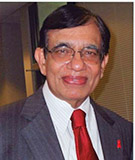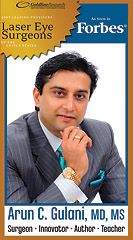
How to Strengthen your Self-Defense -- Part I
Focus on Healthy Living

Megan G, a 62-year-old female, accompanies her husband to the office and casually mentions to me that she has a persistent nagging cough. A quick chest X-Ray reveals a suspicious spot in the left lung that turns out to be cancer. The reason? Chronic cigarette smoking.
Judy, only 32, complains of severe fatigue and leg pains. She is morbidly obese with a Body Mass Index of over 40. Turns out that she has diabetes and her hemoglobin A1c test (HbA1C), a standard parameter that we measure in the blood to determine the degree of diabetes, is up 9.6., normal being below < 6.2
What do all these have in common? These patients are suffering from “lifestyle” diseases – an alcoholic, a smoker and an overeater who develop illness related to the type of abuse they subject their body to.
Supposing I tell you that up to 50 percent of heart disease, stroke and cancer – the three deadly diseases that account for the majority of deaths in the United States – could be related to unhealthy lifestyle, your first reaction would be, “No way,” right? But studies have already affirmed that a healthy lifestyle will go a long way to eliminate most of the deadly diseases that we encounter in our practice.
No matter what you do, your body will keep getting older. The changes brought about by aging will cause your heart to become less efficient, hardening of the arteries (atherosclerosis) leading to heart attacks and strokes, atrophy of individual cells or proliferation of abnormal cells leading to cancer. All these make the body, especially the heart and brain, less efficient over time and can lead to heart attacks, strokes, diabetes, cancer, etc. However, you can slow down the process of aging-related deterioration of the body by observing a healthy lifestyle and focusing on general fitness.
According to a report from the American Heart Association, only 3 percent of Americans have optimal heart health, while 10 percent have poor heart health. The findings are based on a survey of more than 350,000 Americans. And what are the criteria for normal health? People are considered to have optimal heart health if they have normal blood pressure and cholesterol; have no diabetes mellitus; are not obese, overweight or underweight; do not abuse tobacco or other harmful agents; stay active with at least 150 minutes of moderate physical activity or 75 minutes of vigorous physical activity a week, and eat five or more servings of fruits and vegetables a day.
“Do these things really pay off?” asked one of my friends recently. “Occasionally, I see people without major risk factors like what you tell us, having heart attacks?” he said. Yes, there are always exceptions. Two reports, both originating at Brigham and Women's Hospital in Boston and published in a recent issue of the Journal of the American Medical Association, are relevant. These studies focused on “different aspects of cardiovascular risk in two large groups: the 83,882 women in the second Nurses' Health Study, and the 20,900 men in the Physicians' Health Study I. Both arrived at the same conclusion: Do the right things and you get measurable benefits.”
And what are those right things? Here is a quick summary: Diet is of paramount importance. Eat right, going easy on sugar and salt, always a breakfast (cereal) before you leave home. Vegetarians generally live longer (more about it later). If the president of American College of Cardiology has his way, he will convert everyone to a plant-based diet. Rightfully so. A minimum of five helpings of vegetables and fruits or more are recommended. Coupled with 30 minutes of medium intensity exercise regularly and maintaining your normal BMI, the incidence of coronary heart disease, strokes and cancer will go down significantly. Of course, no tobacco abuse, drugs or excessive alcohol. And stress reduction in whichever way possible. A good night’s sleep and compliance with doctor’s recommendations will round up this advice.
“We have come a long way in prevention of cardiovascular diseases, but we still have a long way to go. Improving diet and exercise will help us get there,” says Kim A. Williams, president of American College of Cardiology.
M.P. Ravindra Nathan, M.D., is a cardiologist and Emeritus Editor of AAPI Journal. His book “Stories from My Heart” was recently released. (www.amazon.com or www.bn.com).
Eye Care
SUMMER AND SUN: THE GOOD (SUN), THE BAD (BURNS) AND THE AMAZING (SOLAR-POWERED VISION)!

We all look forward to sunshine and most people spend a lifetime dreaming of retiring to our beautiful state of Florida. That is the good part.
Well, with the good comes some bad! We are constantly bombarded with skin protection in summer but it is important to realize that UV radiation from the sun can damage not only the skin of your eyelid but also the cornea, lens and other parts of the eye. UV exposure also contributes to the development of certain types of cataracts and possibly macular degeneration.
Dermatologists caution us about melanoma. Doctors urge us to remain hydrated during outdoor activities but there is not much a hue about another distressful condition that increases in incidence with sun exposure – Pterygium.
Pterygium, pronounced “terigeeum,” is a raised, wedge-shaped growth of the conjunctiva (transparent saran wrap-like layer covering the white of our eyes. This layer when infected causes the pink eye or conjunctivitis) which starts with a cosmetically unappealing, constantly red eye with symptoms of irritation, redness and even tearing.
It is fairly common among sports and recreation enthusiasts, golfers, surfers, as well as outdoor workers. Although it often remains dormant and causes mostly a cosmetic blemish with embarrassingly red and unhealthy looking eyes, it can be a relentless disorder, growing across the cornea and adversely affecting vision.
Breakthrough techniques and technologies to address this condition, rampant especially in Florida climate, include the use of human placenta wherein after removing the lesion during surgery, a human amniotic graft (derived from human placenta that is tested to be disease free) is applied to the area of surgery and this technique is further enhanced by using tissue glue instead of stitches resulting in a more comfortable surgical outcome with a goal towards cosmetic improvement in appearance, including a lower rate of recurrence.
Additionally, advanced laser vision surgery and modifications of “No-Cut” Lasik can be performed on such patients to further make them see without glasses or contact lenses in keeping with the philosophy of “Look Good and See Good.” This also prevents contact lens wear in patients, thus decreasing the irritation to the surgical area.
Even with such surgical advances and pharmaceutical landmarks, I believe that prevention is still the best medicine.
When you're choosing sunglasses, look for UV-protection details on product labels. Choose sunglasses that block 99 to 100 percent of both UVA and UVB rays. Skip sunglasses that neglect to offer details about their UV protection. Keep in mind that the color and degree of darkness sunglasses provide have nothing to do with the sunglasses' ability to block UV rays. Also, opt for wraparound sunglasses or close-fitting sunglasses with wide lenses that protect your eyes from every angle.
Standard prescription eyeglasses in the U.S. are treated to provide UV protection while retaining a clear, non-tinted appearance. Some contact lenses also offer UV protection, but should be worn in combination with sunglasses to maximize protection.
In addition to UV protection, polarized lenses reduce reflected glare, such as sunlight that bounces off snow or water like when skiing, driving and fishing.
Now for the Amazing!
New research suggests that a leading cause of blindness can be fixed with tiny solar panels in the eyeball. A team spearheaded by Stanford University researchers found they could improve vision in rats using hexagonal, wireless silicone implants, called pixels. The implants attach to working neurons, called ganglions, in the eye — survivors that weren't knocked out by degenerative diseases like retinitis pigmentosa or macular degeneration. Essentially, the implants replace the dead photoreceptors, which turn light into signals and tell our brains what we see.
The team published its findings in the journal Nature Medicine. The technology is based on photovoltaics, or the process of converting solar energy into electricity. NASA's Glenn Research Center has an entire photovoltaics department; solar energy is essential for building and powering solar probes that travel closer to the sun. There are even photovoltaic systems in use on the International Space Station.
The ability to make these "solar panels" smaller and embeddable in the human eye means more of them can fit in the eye, which translates to better, more accurate vision. Combined with additional light transmitted to the panels from a special pair of glasses, vision could improve even more.
Current prosthetics with the same purpose get less-accurate results. They involve wires and more invasive surgery, which can lead to infection. So far, according to the Stanford Medicine News Center, these prostheses normally only improve a patient's vision up to 20/1,200 which is not great.
The Stanford researchers' rat-tested results showed vision restoration up to 20/250, almost five times better than current options. The research team led by Dr. Daniel Palanker has plans to run a clinical trial next year, working with a French company called Pixium Vision. The hope is for this technology to reach 20/120 and become a treatment option for macular degeneration
Maybe you can even get a rebate for using solar energy in the eyes and reduce your taxes.
Now that would be truly amazing!
Arun C. Gulani, M.D., M.S., is director and chief surgeon of Gulani Vision Institute in Jacksonville. He can be reached at [email protected] or visit www.gulanivision.com